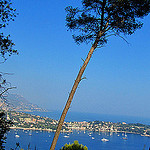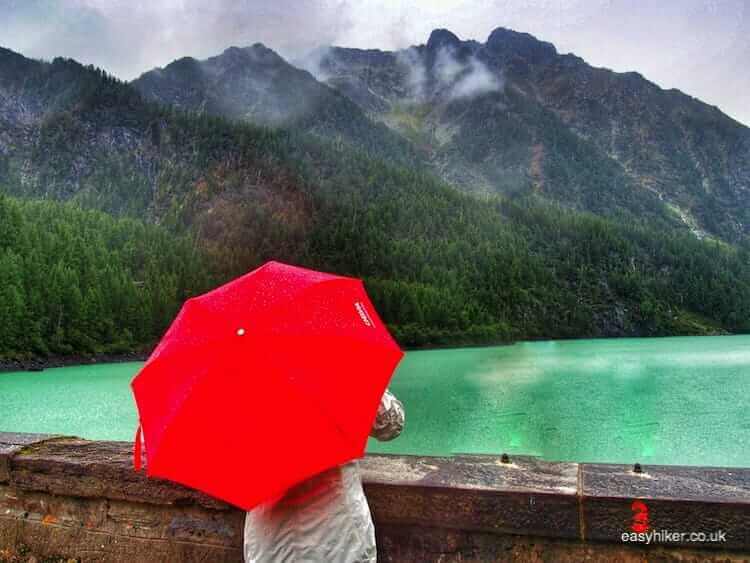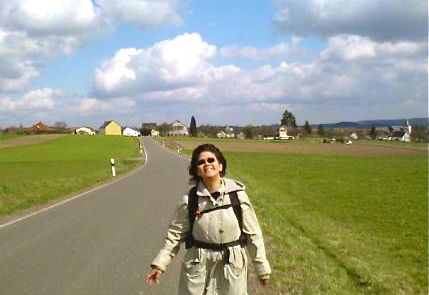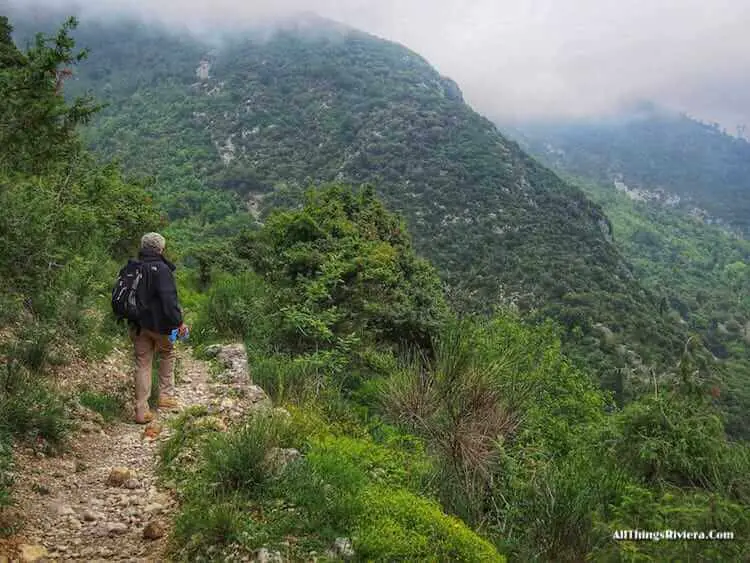“Parma as a capital city needed a river”, said the Italian poet Artilio Bertolucci (the father of the internationally famous and Oscar-winning film director), “but since it is was only a small capital of an undistinguished Duchy, all it got was a torrente.”
Torrenti are so unfamiliar in Northern European countries that most of the local languages do not even have a word for rivers that only fill up at certain times of the year.
Up North, what I now (from our new domicile) happily call “the other side of the Alps”, rivers wax and wane over the course of the year but never shrink to the point where they hold no water at all.
In southern Europe, these seasonally “waterless streams” are more common, but even there, it is unusual for a city the size of Parma to have a 50-meter long bridge that spans …

… what is essentially a deep and largely dry ditch, at least during the summer months.
Some of the water that has gathered in the wetter seasons of winter and spring may still stick around …

… but no new water is coming, and the liquid that lingers on in surface recesses and crevices never reaches the critical mass which is required to produce a flow.
The evening we had arrived, the Parma – town and torrente share the same name – had carried even less water.
But the following night, it rained a little, and those areas of the riverbed which had previously been cracked and dry were now filled with puddles, while other sections of the Parma already gave a credible impression of a “proper” river.

At any rate, this is not something you see every day, and for that reason alone you should seize the opportunity of taking a good look at what a dry (or nearly-dry) riverbed looks like from up close.
The municipal administration has put up some warning signs that tell you not to walk down the embankment, pointing out the dangers of spending any amount of time near a body of water which can, given the right conditions, move and fill up very quickly indeed (just think of all the things that the English word “torrent” stands for).
Nobody in town, however, seems to mind very much. Barriers have been casually moved aside (nobody has bothered to put them back in place), and you can see plenty of people walking, cycling or sitting by the torrente.
How to Feast Yourself on Parma
My suggestion is: when in Parma, do like the Parmensi, as the locals call themselves.
It also seems that some parts of the riverbank have been considered sufficiently safe for some municipal artwork – so you appear to be in good company.

The Parma torrente may be the most unusual and unique feature of its host city: the town’s “unique selling point” if you so wish, but it is not the only thing worth seeing.
The centro storico is full of magnificent palazzi …

… on either side of the Romanesque cathedral that has been decorated with frescos by Antonio da Correggio, perhaps the last great genius of the Renaissance …

… and in between, you will come across the attractive blend of bubbly street life and medieval architecture that all visitors expect to experience in Italy.

From an easy hiking point of view, the most interesting place in the Old Town to complement a stroll by the Parma river is the near-by Parco Ducale.
The gardens of the ancient Ducal palace look surprisingly autumnal when we visited in September, much like a 40-year-old man with thinning white hair and deep wrinkles in his face, …

… but if you make it to the far side of the grounds, you will be rewarded by the sight of a seemingly enchanted island inside a large pond.

Pond and island were constructed in 1690 for the wedding celebrations of Duke Ranuccio Farnese II’s oldest son. The pond would provide a pleasant scenery for a stroll at any time, but the temporary exhibition of modern sculptures which was swimming around on the lake’s surface when we visited in September ensured that there was even more to discover.
All works on show attempted to gently complement the landscape rather than to overwhelm it, like Ylenia Deriu’s “Coral Necklace” …

… and Petra Liebl-Osborne’s “The Banquet”, which picked up the wedding feast theme that is so closely woven into the lake’s story of origin.

Speaking about feasts: one thing you should not forget to do when in Parma is to pay your own personal homage to the town’s rich culinary heritage.
Parma may be a “small capital”, as Artilio Bertolucci said, but the country it rules is Italy’s “Land of Milk and Cattle”: this part of the Emilia-Romagna region is the home of both the Parmesan Cheese and the Parma Ham.
There must be many shops in town where you can sample and purchase excellent specimens of either, but we were happy to stumble upon the Formaggeria Rastelli on 2E Via Copelli which produces most of its cheeses on a farm some 20 km out of town.
Bear in mind that food and drink are central elements of Italian culture wherever you go, and that few cities around the country can match Parma for the richness and the excellence of its traditions.
Local meat and dairy products are as big and as unique an attraction as the torrente that gave Parma its name.

Whenever we take a longer trip to Italy, we go to a place where we really want to go – and then, on the return, take a detour to a place a little off the road. Somewhere between our destination and home in France.
This, we have found out over the years, is the best way of something which, many people say, is logically impossible: surprising yourself.






